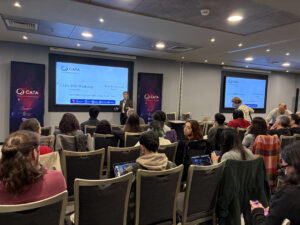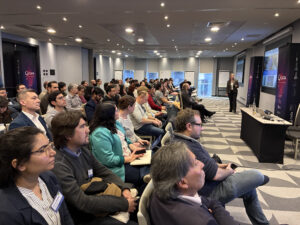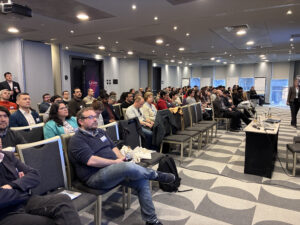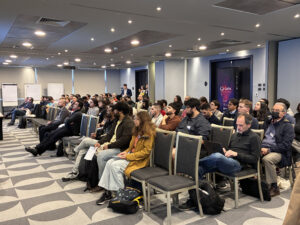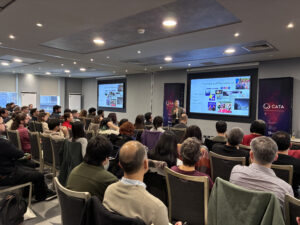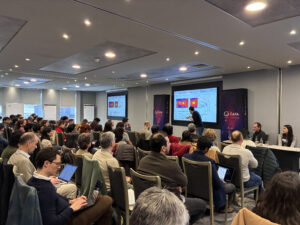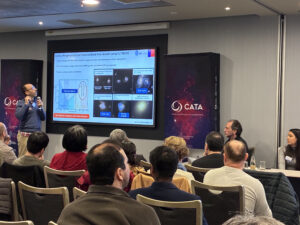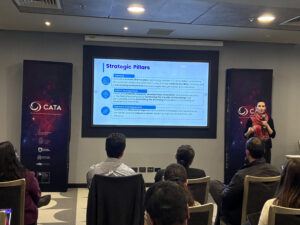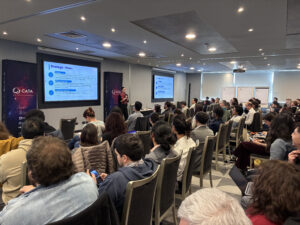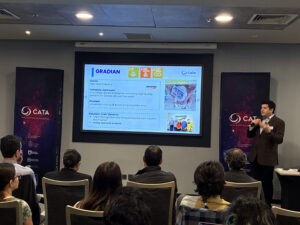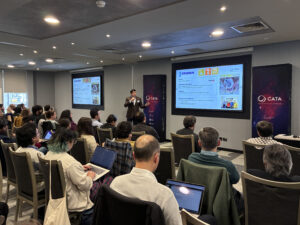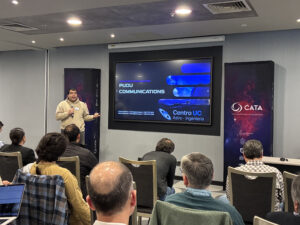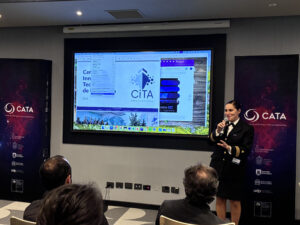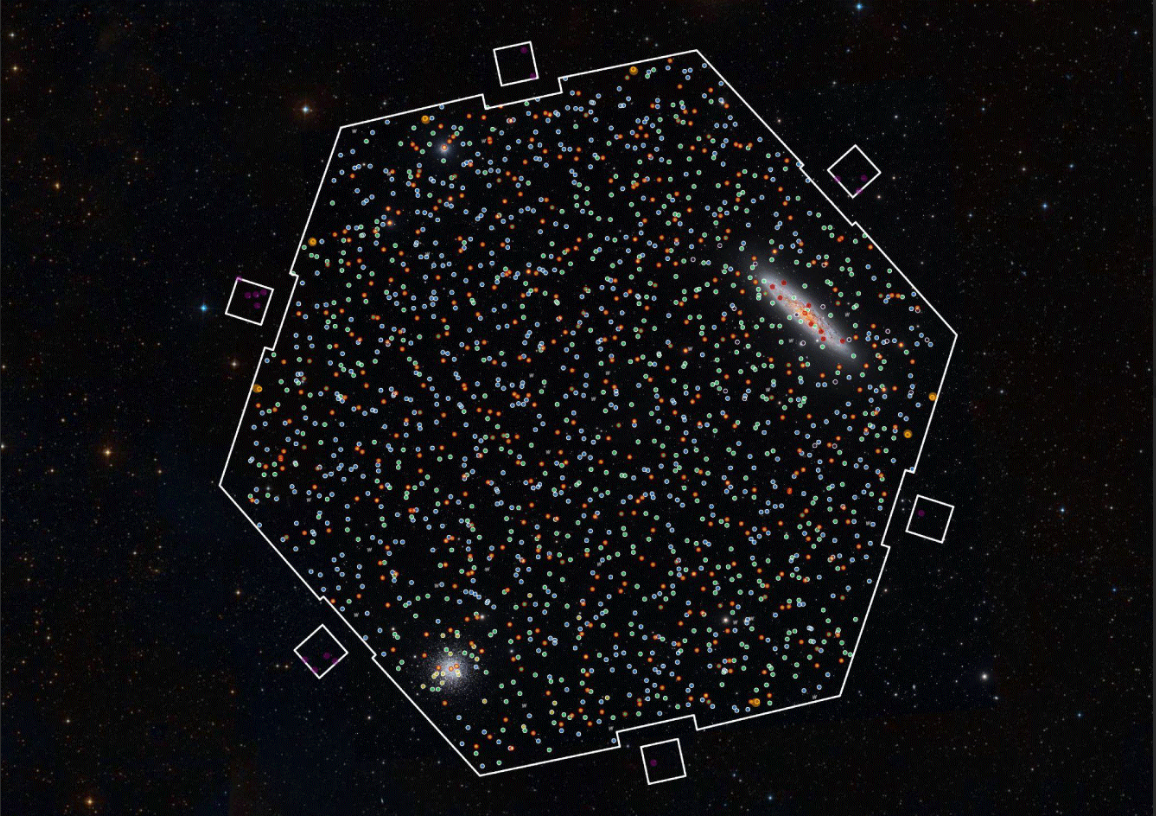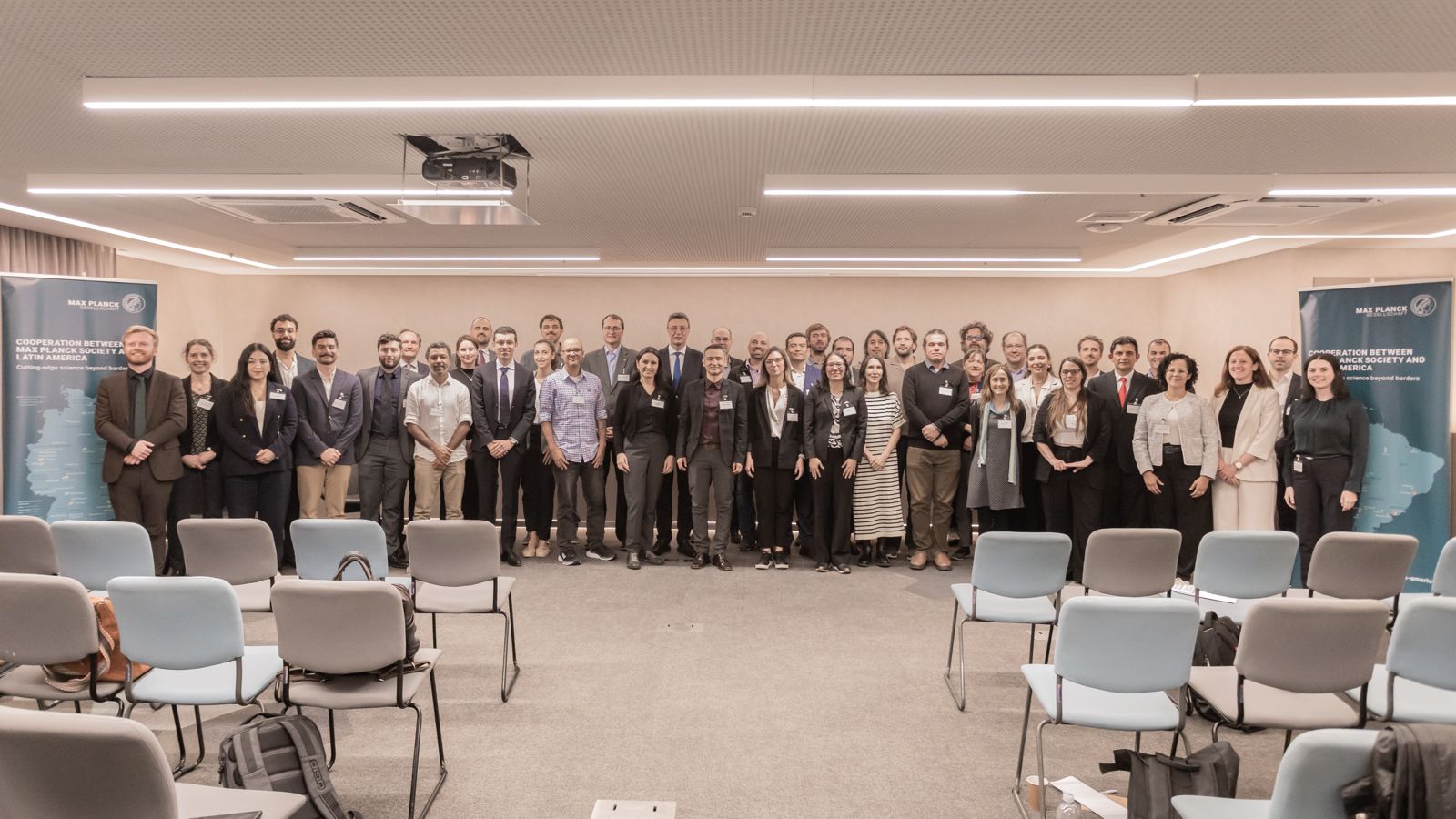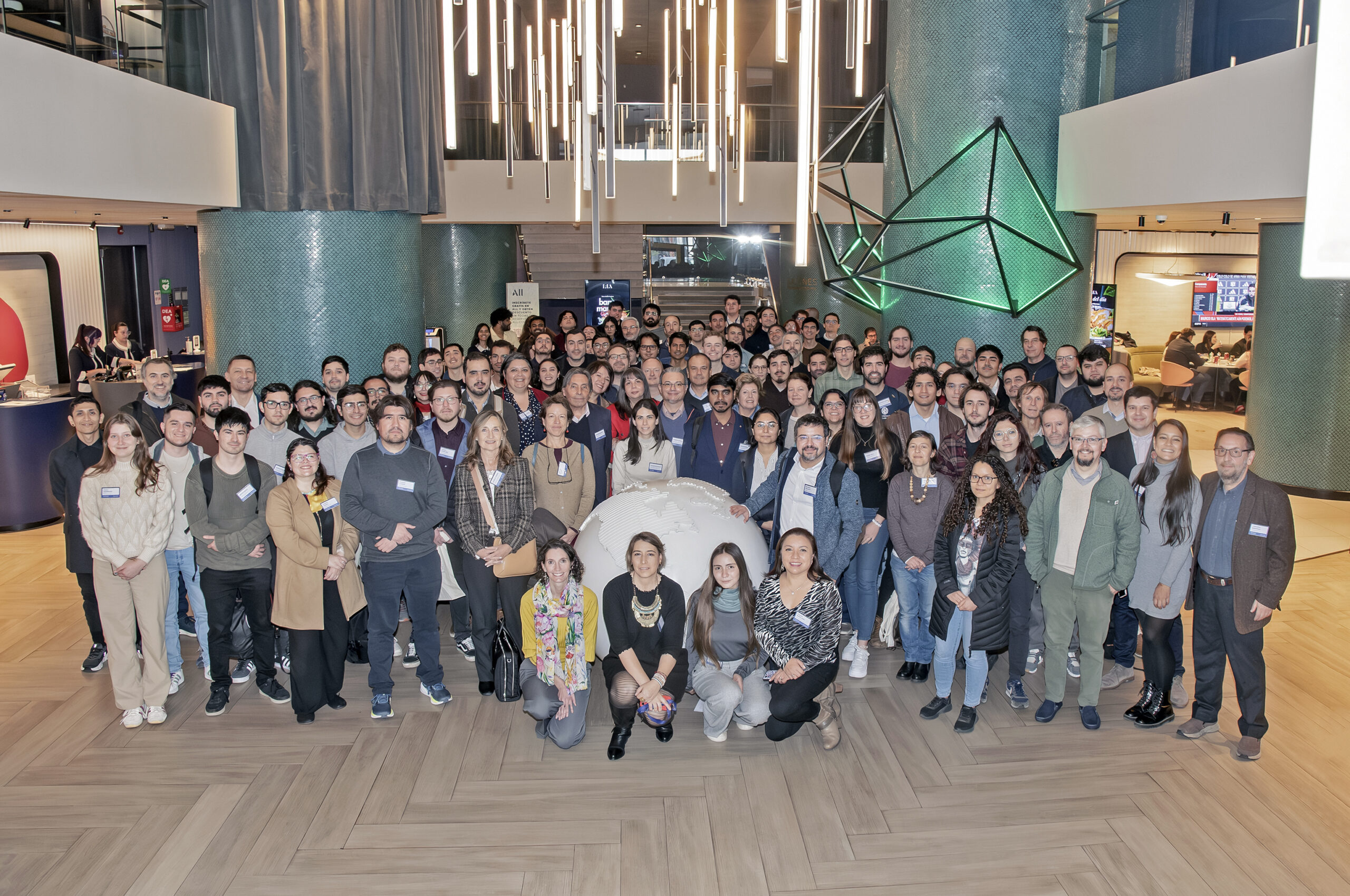
CATA plans its future at its 2025 Annual Meeting
Over two days, more than 120 researchers, engineers, and students gathered in Santiago to evaluate the work carried out and define the scientific, technological, and outreach challenges for the next five years.
More than 120 members of the Center for Astrophysics and Related Technologies (CATA), including researchers, engineers, students, and collaborators, gathered in Santiago on August 7 and 8 to participate in the 2025 Annual Meeting, an event that brings together the Center’s community to reflect on its progress, discuss challenges, and chart a roadmap for the coming years.
Over two days, the results achieved in recent years were reviewed and strategies were discussed to strengthen research, instrumentation, technology transfer, and dissemination with the aim of identifying the key challenges facing astrophysics in Chile and enhancing synergies within the institution to make the most of its human, technical, and infrastructure capabilities.
The opening day began with a presentation on the current status of CATA by its Director, Patricia Tissera, and Deputy Director, Roberto Assef. This was followed by a session on highlights by research area, divided into two blocks: the first, led by Associate Researcher Timo Anguita (UNAB), covered areas 1 to 4 (Cosmology and Galaxy Formation, Supermassive Black Holes, Galaxies, Local Universe), and the second, led by Associate Researcher Bárbara Rojas-Ayala (UTA), which covered areas 5 to 8 (Star and Planet Formation, Exoplanets and Astrobiology, Theoretical Astrophysics, Astronomical Instrumentation).
In the afternoon, the session Planning the Future: Computational Infrastructure was held, led by Ezequiel Treister (UTA) and Leonardo Krapp (UdeC). Subsequently, the Training/Outreach/Communication block, led by María José Jullian and José Utreras, brought together researchers and students to propose scientific outreach activities.
Friday began with the joint sessions Challenging Questions and Searching for Answers, coordinated by Thomas Puzia (UC), Viviana Guzmán (UC), and Evelyn Johnston (UDP). Current scientific challenges were then discussed, moderated by Roberto Assef together with Amelia Stutz (UdeC) and Antonela Monachesi (ULS). The morning closed with Planning the Future: Instrumentation, led by Leonardo Bronfman (U. de Chile), Rodrigo Reeves (UdeC), and Rolando Dünner (UC).
During the afternoon, the exhibition “Planning the future: Technological Transfer” was held, led by Santiago Prat, Innovation Manager, and Fernanda Mesa, Technology Transfer Manager. The meeting concluded with remarks and closing words from the Center’s Board of Directors, consisting of Director Patricia Tissera, Deputy Director Roberto Assef, and General Manager Elise Servajean, thus bringing to a close two days of academic exchange and strategic planning for the future development of CATA.
Connected community
For Patricia Tissera, the meeting achieved its main objective: “to bring our community together, engage in dialogue, and plan for the next five years. CATA is a diverse ecosystem, with members spread throughout Chile and lines of work ranging from basic research to technology transfer. We need to keep that sense of community alive to face the challenges presented by large astronomical facilities under development and generate synergies that strengthen our impact,” she emphasized.
The value of the meeting was shared by other attendees. Evelyn Johnston (UDP) defined it as “a unique opportunity to learn about the breadth of projects being carried out in Chile and to open up spaces for scientific discussion.” For Bruno Dias (UNAB), “the format of open discussions and exchange between areas has been key to understanding the Center’s overall picture and aligning efforts.”
The students also shared their perspectives. Nicolás Sandoval (UdeC) emphasized that “it allows us to learn about unfamiliar areas and gain insight into future technologies.” Meanwhile, Amrita Singh (U. de Chile) valued “the diversity of research and the in-depth conversations about dissemination, instrumentation, and theory.”
The 2025 Annual Meeting reaffirmed CATA’s commitment to scientific excellence and interdisciplinary collaboration, while highlighting future challenges. After the meeting, Director Patricia Tissera noted that “CATA is an ecosystem where lines of work such as research, instrumentation, technology transfer, and dissemination coexist. The great challenge is to achieve synergy between them, so that we can continue to generate astrophysics of excellence and continue to train competitive human resources, while consolidating the transfer of knowledge and technology to society. At this point, the Center already has a solid track record that allows it to look firmly toward the future, seeking to have a positive impact on society,” emphasized the researcher.
Recent news
-
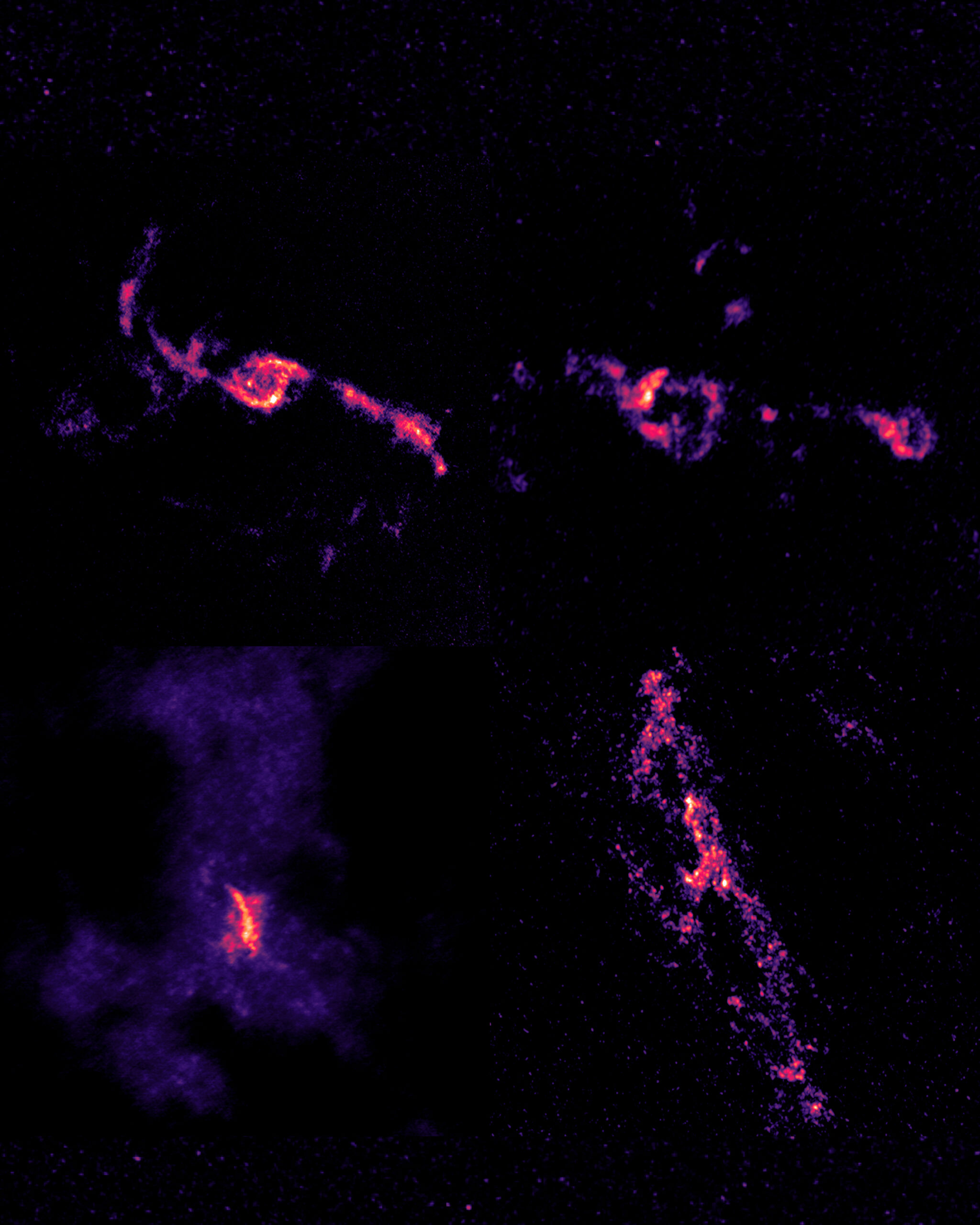 Publicado el: 22/12/2025International study reveals that black holes feed selectively
Publicado el: 22/12/2025International study reveals that black holes feed selectively -
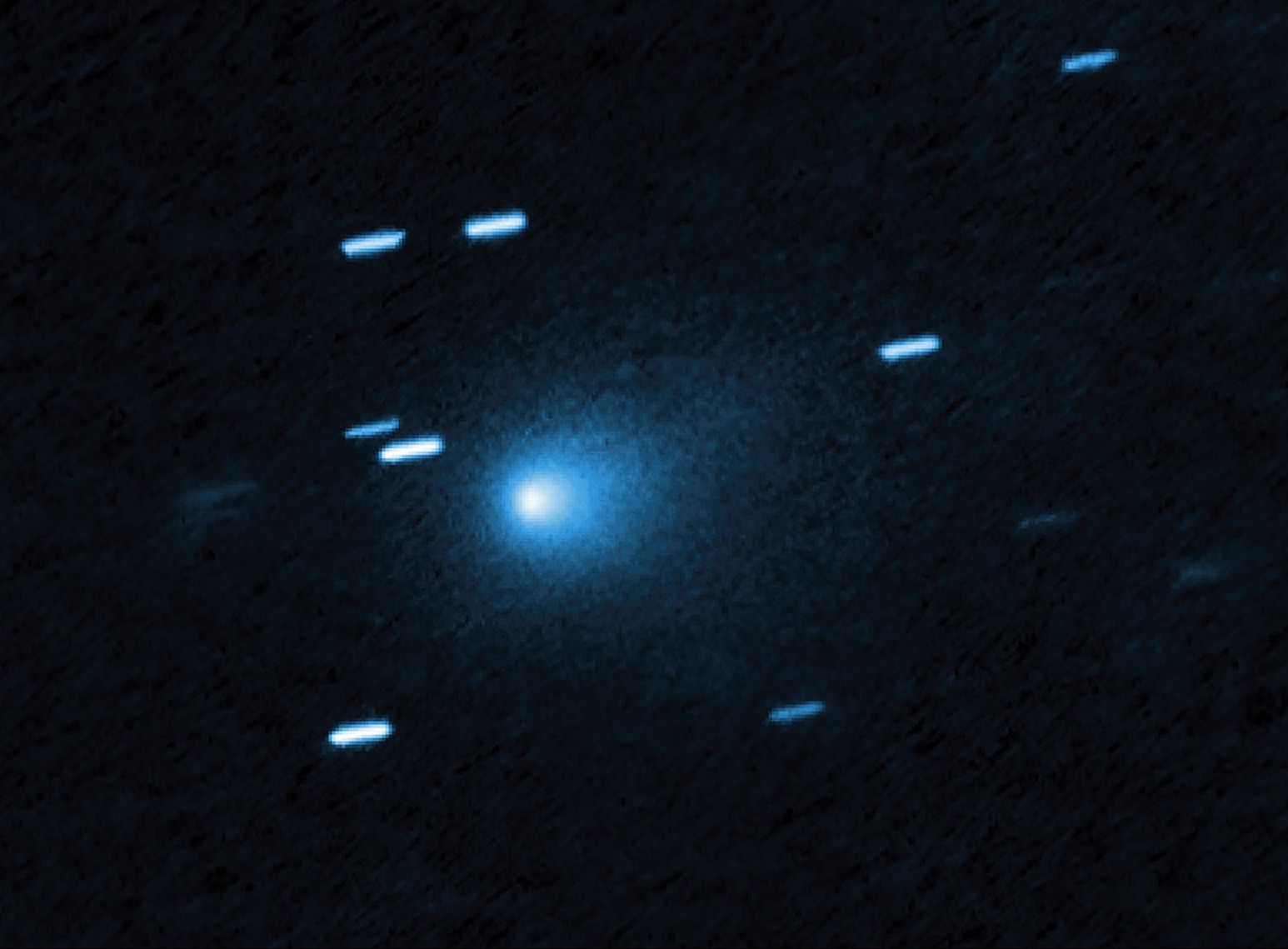 Publicado el: 20/12/20253I/ATLAS: the interstellar comet approaching Earth and what is known about it
Publicado el: 20/12/20253I/ATLAS: the interstellar comet approaching Earth and what is known about it -
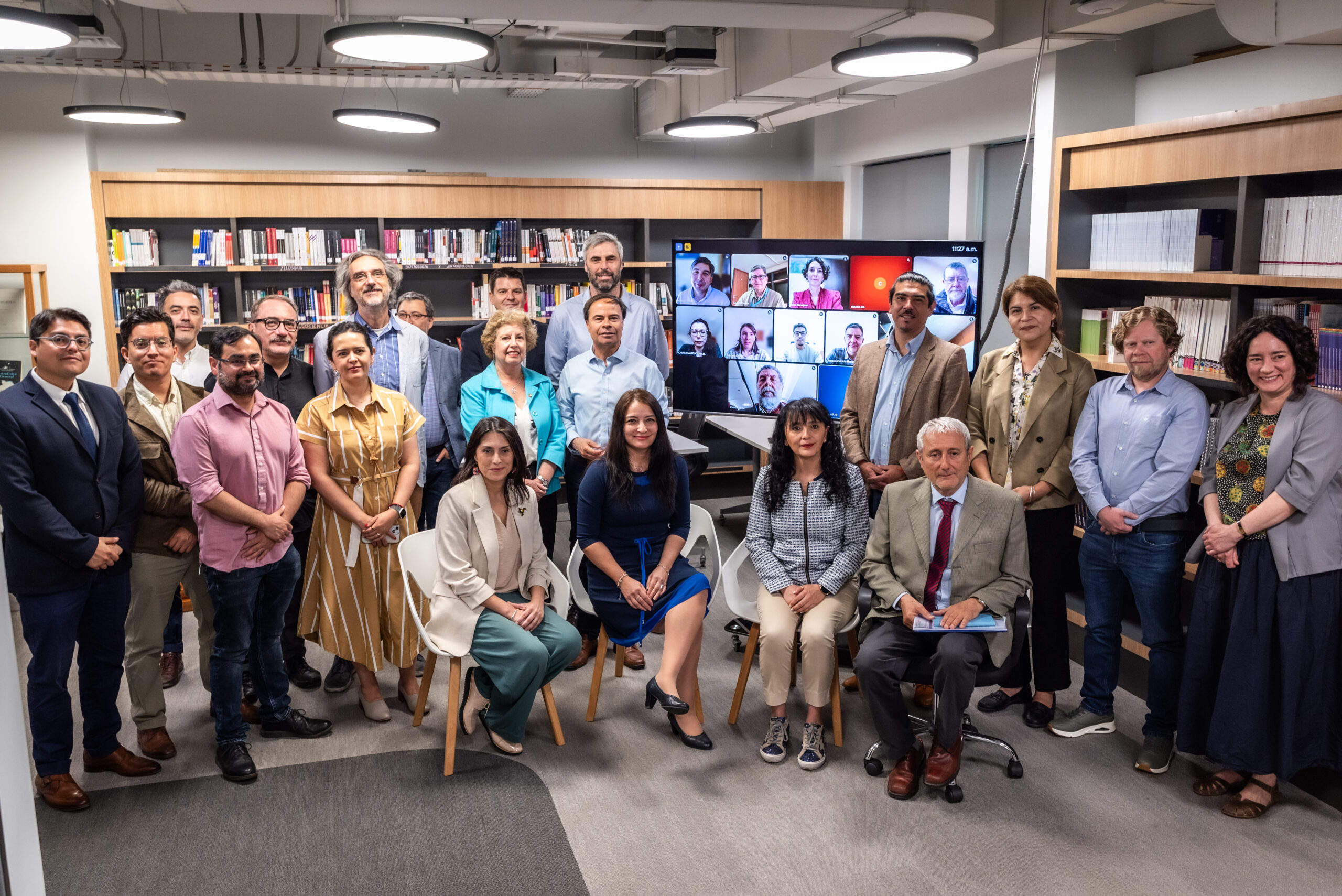 Publicado el: 18/12/2025Ministerial Advisory Committee for Astronomical Observation submits its final report
Publicado el: 18/12/2025Ministerial Advisory Committee for Astronomical Observation submits its final report -
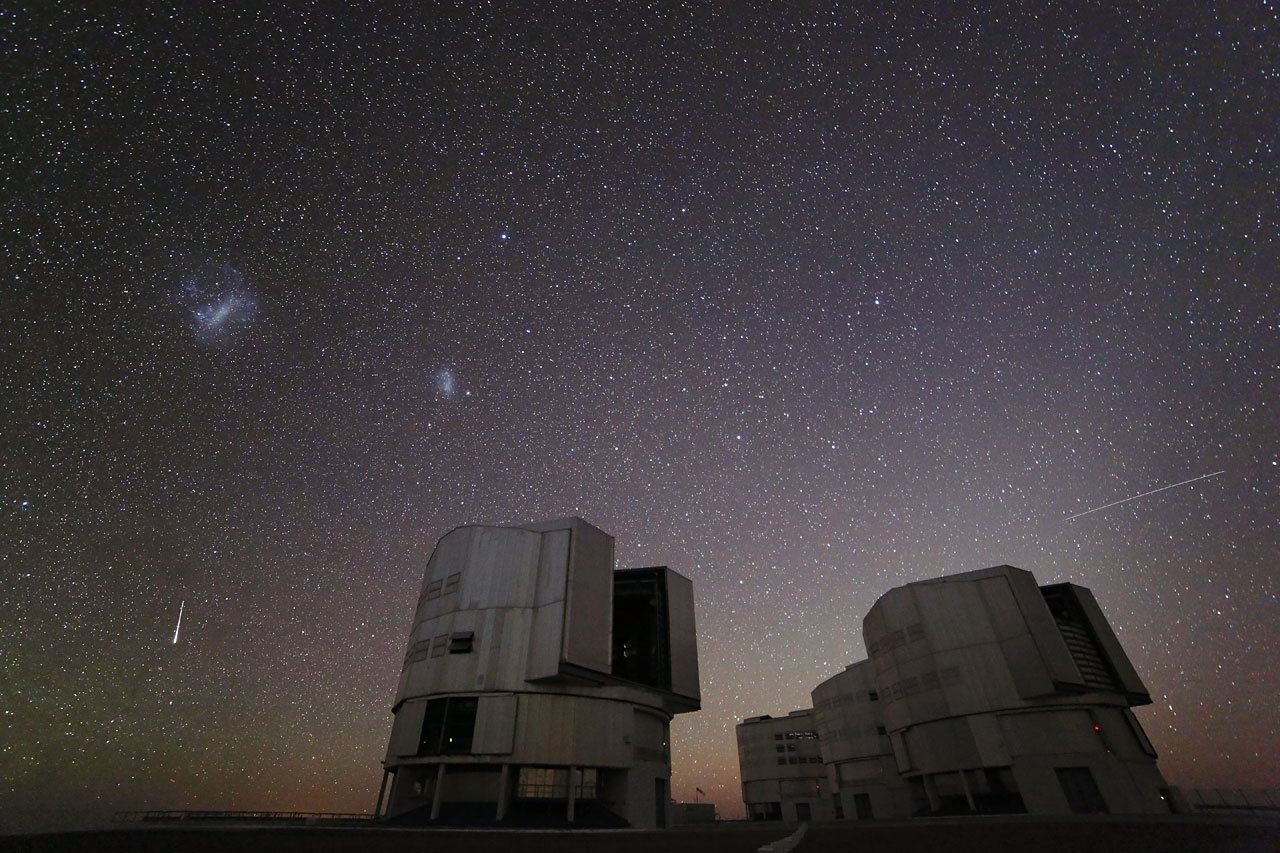 Publicado el: 13/12/2025Geminids 2025: facts and how to observe the last meteor shower of the year
Publicado el: 13/12/2025Geminids 2025: facts and how to observe the last meteor shower of the year -
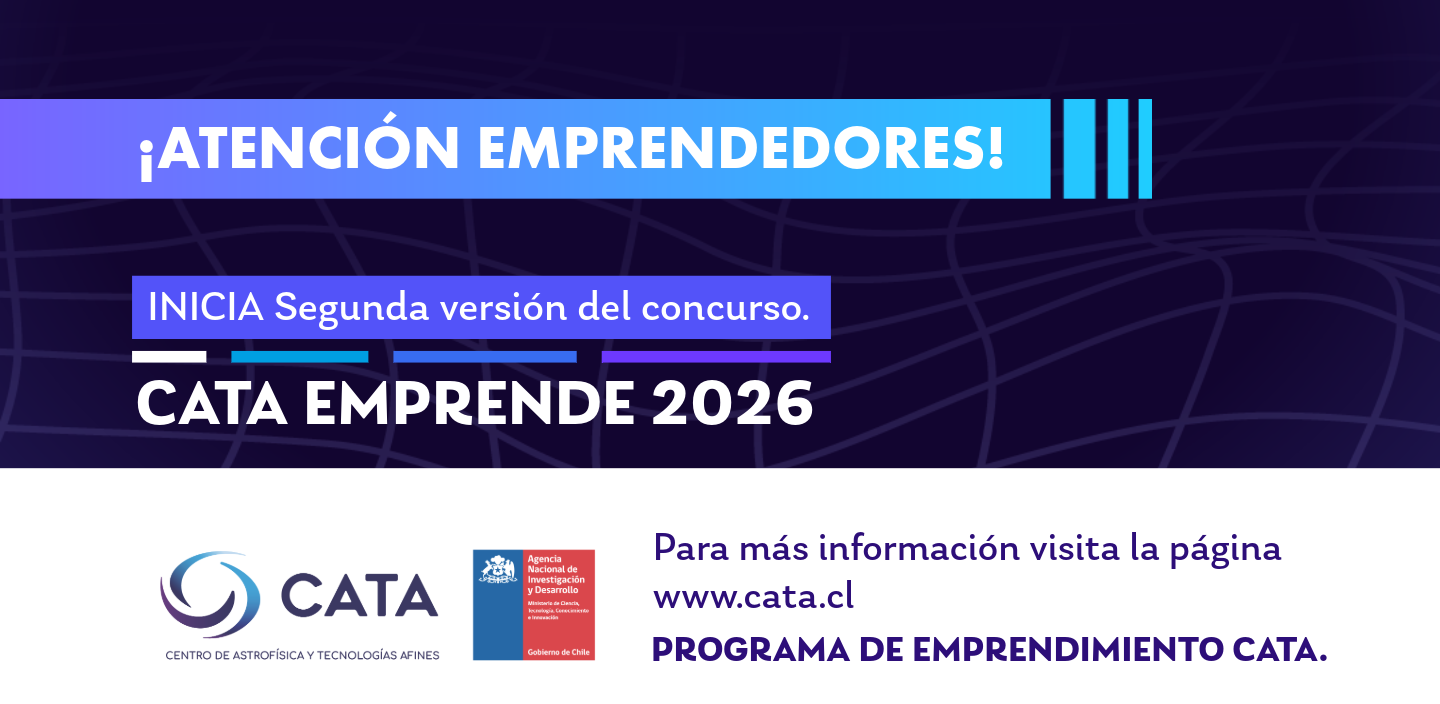 Publicado el: 12/12/2025Call for applications for the CATA Emprende 2026 program now open
Publicado el: 12/12/2025Call for applications for the CATA Emprende 2026 program now open
Categories list
- Acknowledgments 21
- Astrobiology 6
- AstroCluster 1
- Black holes 20
- Corporativo 58
- Cosmology 5
- Descubrimientos 23
- Disclosure 74
- Exoplanets 14
- Extension 7
- Galaxies 22
- Galaxies formation 6
- Inter y Transdisciplina 4
- Local Universe 17
- Publications 6
- Sin categorizar 34
- Solar System 23
- Stellar formation 8
- Technology 16
- Technology Transfer 18
